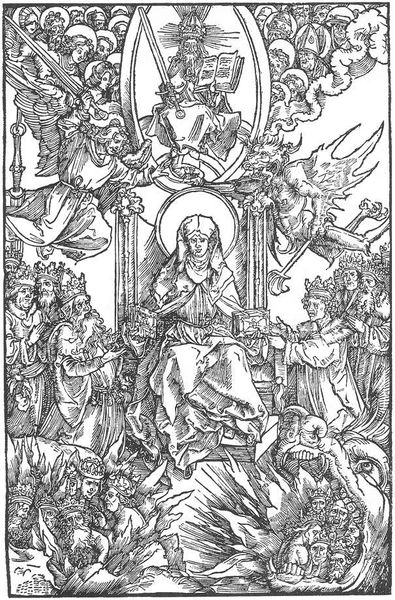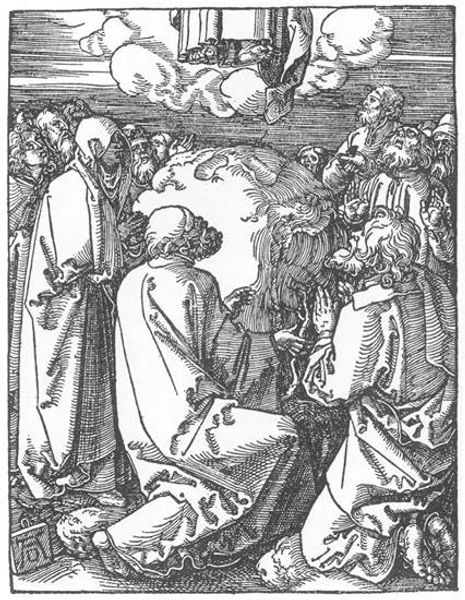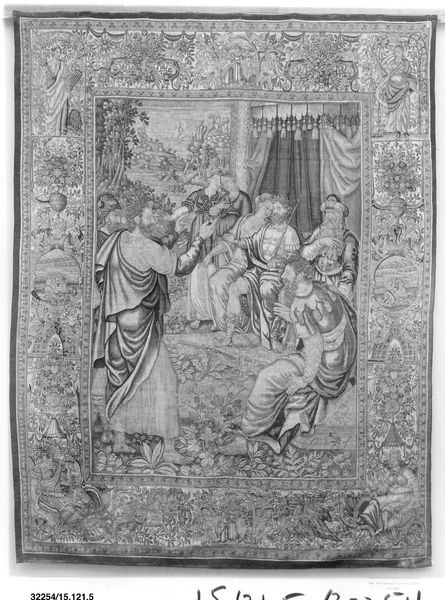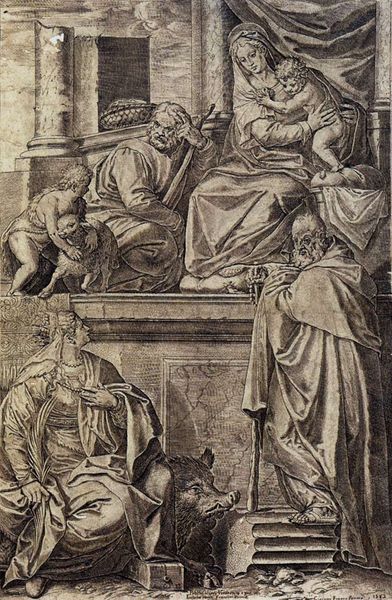
Madonna and Child with musical angels 1485
0:00
0:00
albrechtdurer
Staatliche Museen zu Berlin, Berlin, Germany
drawing, print, etching
#
portrait
#
drawing
# print
#
etching
#
figuration
#
11_renaissance
#
madonna
#
child
#
arch
#
christianity
#
pen work
#
history-painting
#
northern-renaissance
#
angel
Copyright: Public domain
Editor: This is "Madonna and Child with musical angels" by Albrecht Durer, created around 1485. It's an etching, which gives it a really interesting, detailed look. I’m struck by the precision and labor involved in creating so much detail in print. What do you make of it? Curator: What strikes me is the relationship between artistic skill and devotional practice here. Dürer wasn't just creating an image; he was engaging in a meticulous, labor-intensive process. Think about the resources involved: the paper, the metal plate, the inks, and of course, the artist’s time and skill. How does the act of producing such a detailed image relate to the understanding of faith at the time? Editor: That's interesting. I hadn't really considered the economics of it. The printmaking process does seem to make art more accessible, maybe to a wider audience than painted works. Curator: Exactly. The very materiality of the print – its replicability, its potential for widespread circulation – democratizes religious imagery to a certain extent. And notice the stylistic tension – Durer, rooted in the Northern Renaissance, utilizes printmaking traditionally linked with less academic purposes, bringing an inherent contrast to a well-established sacred subject. The materiality informs the message. Editor: So it's not just about the image, but also about how the image was made and distributed, and what that says about the changing role of art in society? Curator: Precisely. We’re talking about a shift in art's function, moving away from unique, handcrafted objects exclusively for the wealthy towards potentially mass-produced images for broader consumption. The process becomes part of the meaning. Editor: That's a fascinating perspective. I'll definitely think about the production and distribution of art differently now! Curator: Good! Looking at the processes involved broadens our perspective on the meaning.
Comments
No comments
Be the first to comment and join the conversation on the ultimate creative platform.













